- Home
- James A. Michener
Chesapeake Page 27
Chesapeake Read online
Page 27
The present cargo of slaves, having engineered a partially successful mutiny during the pirate attack, had gone on to rip away the top planking of the barracoon and showed promise of destroying the rest, if allowed. “I don’t want to shoot them,” the captain explained, “but we can’t let them break loose.”
“The whole should be reinforced,” Paxmore said, and the semi-pirates who operated Marigot agreed, so for three more days the carpenters worked, and during this time Paxmore had many opportunities to observe the extraordinary natural beauty of this place; its combination of steep hills and deep water entranced him, and he thought: Some day when Maryland is finished I would like to live here.
The barracoon, on the other hand, made little impression on him, and the slaves imprisoned within, none at all. In Boston he had had no chance to observe blacks. Occasional families had owned slaves, but in a city they were much like indentured servants and were treated in the same way. Now he saw several hundred crowded together and guarded by muskets, and his only thought was: They look sturdy, all of them.
To him black slaves were merely an extension of the indenture system of which he had been a part. In London, prior to sailing to the New World, he and his fellows had been sequestered in barracoons, and on landing in Boston he had been auctioned off. He had been a slave of sorts, and his slavery had been an avenue to a better life. The only difference between him eleven years ago and these blacks now was that their indenture was for life, and could be discharged by no passage of years, no amount of faithful servitude.
He could not comprehend the implications of this difference, because to him the idea of a perpetual indenture made common sense, for the black would enjoy a fixed position, a known security and a permanent master with whom he could establish a workable relationship. Paxmore could not, as he hammered the final boards of the barracoon into position, anchoring them with chains, perceive the dreadful moral problem that would arise if the permanent indenture of these blacks were extended to their children, and their children’s children to all generations. That was slavery of a kind he could not envisage for himself.
But he felt no necessity to give the problem serious thought, and when the barracoon was mended he had three fine days to enjoy Marigot Bay before returning to Barbados, and he spent them well, imprinting on his mind the peculiarities of the tropics. But on the evening of the third day an English trading ship rushed into the bay with alarming news: “Pirates are loose again. They raided Port Royal and were seen heading south.” So all slaves in the barracoon were hastily loaded into the trader and sails were raised for Maryland. It was on this ship that Paxmore embarked.
Once the slaves had been deposited in Jamestown, the ship proceeded to Devon with crates of furniture, and here he walked down the gangplank, wide-eyed, to inspect his new surroundings. He was met by a handsome gray-haired man nearing fifty, who extended his hand and a most cordial invitation: “I’m Henry Steed, and if you’re looking for work, I surely need a carpenter.”
“I was sent to the Quakers of the Choptank.”
“Hard people to work for. You’ll do better here.”
“I am a Quaker.”
“In Maryland, no significance. I pay well, Mr. ...”
“Paxmore.” He liked the concept of an employer’s offering to hire a workman before asking his name. “I would like to work for thee, but I am obligated to seek out the Quakers first.”
“And so you should, if promised.” And then, to Paxmore’s surprise, Mr. Steed arranged for one of his own boats to forward Paxmore up the river to the spot where the Steeds had recently opened a large warehouse. “It’s called Patamoke Landing,” Steed explained. “Few houses but much activity.”
“I am surprised thee would offer thy boat to a stranger,” Paxmore said.
“We are hungry for settlers. Quakers seem as good as any.”
When the bateau entered the harbor, Edward Paxmore saw a sieht which put his wandering heart at rest: a secure haven from storms, a rude log hut serving as a tavern, two houses, a score of boats come in from neighboring headlands. Someone rang a bell, and people gathered from unexpected places.
“Are there any women among the newcomers?” two young men asked.
“Only a carpenter,” one of Steed’s boatmen called back, and the young men departed.
“Mr. Carpenter! Mr. Carpenter!” an excited man shouted. “My name’s Pool.”
Bidding for Paxmore’s services began before he landed, for others called out their names, advising him that he was needed, but he gave no sign of recognition, and when he finally stepped ashore, clutching his saw and axes, he said, “I seek James Lamb.”
From a group of men standing beside the Steed warehouse, a man stepped forward and extended his hand. “I am James Lamb and I welcome thee to Patamoke Landing.” He added that he had no need for a carpenter but that his fellow Quaker, Robert Pool, did.
A child, hearing this statement, called, “Robert Pool, thee is wanted,” and a tall, serious man hurried up.
“I’m Pool, the man who hailed thee.”
For some intuitive reason Paxmore believed that he must keep close to James Lamb, and he told Pool, “I have already spoken with Friend Lamb,” and Lamb understood the newcomer’s hesitancy, for he told Pool, “I shall be taking our friend to my house,” and then he asked, “What is thy name?”
“Edward Paxmore.”
“The man from Boston?”
“Yes.”
“Oh ...” Lamb said the word gravely, then quietly moved among the crowd, informing them that this was Paxmore of Boston, and a collection of Quakers formed a circle about the carpenter, asking questions that indicated both their familiarity with his’ history in Massachusetts and the deference in which they held him.
“How did thee hear of the whippings?” he asked simply.
“Two months ago a ship reached us from Boston,” Lamb said almost reverently, “and it carried a Quaker woman who had suffered much in Massachusetts.”
“Ruth Brinton?” Paxmore asked.
“Yes,” Lamb said.
Paxmore surveyed the crowd more intently, then asked, “Did she die?” And Lamb replied, “No, she is at my house ... sorely ill.”
The entire group of Quakers went immediately to the rough-wood house of James Lamb, and as they approached the low-slung door Lamb called, “Prudence! Come here!”
From the doorway appeared a thin, handsome woman of forty, dressed in handwoven heavy cloth and a tight bonnet. She kept her hands folded over her waist and asked, “What’s thee want?” And then she appreciated how large the crowd was. “What is it, James?” “This is Edward Paxmore, from Boston.” Prudence Lamb dropped her hands and stared at the carpenter. Tears came into her eyes, and she fell to her knees and bowed her head. “Thee is a man of heroic resolve,” she said. “Ruth Brinton has told us.”
And James Lamb helped his wife to her feet, and they went into the small house, and there lying on a bed was Ruth Brinton, small, frail and near death from her final course of beatings in Massachusetts. And when she saw the carpenter who had volunteered to take her lashes onto himself, she dissolved in tears, and from that moment her mending started.
THE CLIFF
ALL QUAKERS WHO LIVED NEAR THE LITTLE SETTLEMENT at Patamoke were so pleased when Edward Paxmore married Ruth Brinton, and so in debt to them spiritually for having fought the battles of Quakerism in Virginia and Massachusetts, they banded together to give the couple a homesite. A small fund was collected and a piece of land chosen near the harbor, but when the deed was about to be transferred, James Lamb interrupted with the information that he owned, beyond the marshes inhabited by the Turlocks, a headland he had always intended occupying as one of the finest spots on the river, and he would be pleased to yield this to the Paxmores.
The committee got into boats and sailed down the Choptank past the marshes and to that cliff-protected headland which Pentaquod, eighty-one years earlier, had chosen for his first home on the mainland. It
was still a stunning location, with incomparable vistas in three directions and a warm sense of security among the tall pines and solid oaks. On this headland one seemed part of a vast panorama of bays and rivers and inlets and at the same time an intimate part of a small protected world.
“I do like this,” Paxmore said, but before he would make any commitment he deferred to his wife. “What does thee think, Ruth?”
“Where will thy work be?” she asked, paying respect to the basic Quaker tenet that in this world men and women must work. After obedience to God, faithful performance of one’s job is what counts.
“I would carpenter for the settlers, but we would have our permanent home here—that is, if thee should want to live in a remote ...”
“Oh, I should!” she cried with an enthusiasm she could not suppress. She had seen too much of civil strife, and the prospect of living now on a promontory which overlooked the world was irresistible. Here they would build a home matched to the winds, on a plateau protected by cliffs. It was she who gave the place its name: “Peace Cliff we shall call it.” And along the river it became a symbol of stability, the headland on which the Quakers lived.
They spent three days, with the assistance of friends, building an Indian wigwam at the far edge of the cliff, and as soon as they were alone Ruth Brinton began the rebuilding of her husband.
“Why does thee wear clothes which look too small?” and he replied, “I like my wrists to be free so I can work with my hands.”
“But thee doesn’t work with thy feet. Why wear such short trousers?” and he explained, “A carpenter has to find his timber in many places and I want my ankles to be free.”
“Thee could still look a little neater,” she complained, but he kissed her and said, “Thee’s the neat one, little hummingbird,” and whenever he saw her, trim and delicate in her simple gray clothes, he felt a surge of love, and in time she surrendered; her husband was an ungainly carpenter who would never look neat, himself, but who had a positive passion for producing neat work.
In the autumn of 1664, in a burst of joyful energy, he demonstrated just how fine a carpenter he was: he built two edifices which would earn him a place in Maryland history, and a third object whose impact would vitalize the Eastern Shore. The first building was his own home; with the help of four Indians and two Quaker youths whose parents sent them to aid the newcomers, he cut and joined timber for a modest, two-room house. “It would be pretentious and displeasing to God if we built larger,” he told Ruth Brinton, and she agreed. They used few nails and nothing imported from England, but built so carefully that their little Quaker house would survive for centuries. Secure on its headland and visible for miles along the river, it became the sturdiest of the Choptank homes.
The second building was more important, and since it was larger, it required the services not only of the four Indians and two youths but also of adult Quakers in the community. In Patamoke, James Lamb had acquired another piece of property which he was willing to cede to the Quakers generally if on it they would build a meeting house. This plain sect avoided the word church as smacking too much of architecture rather than purpose; Quakers built meeting houses, and the one Edward Paxmore designed for Patamoke, and built as a testimony of his appreciation for the haven they had provided him, was a masterpiece. In time it would become America’s oldest surviving house of worship in continuous use, and each year of its existence it would be increasingly appreciated as a work of art.
It was set among trees, a marvelous start for any building. Once the land had been allocated, Paxmore spent three weeks analyzing it before he allowed his associates to chop down a single tree, and even then he adjusted his plans to the trees and not the other way around. He wanted a long lane leading to the door of the meeting house, and although it required some ingenuity to fit this lane among his trees, he finally succeeded, so that the entrance to the land became a kind of invitation to prayer.
Thus oriented, Paxmore felt at ease, and in an open space laid out a rectangular building with its central doorway in the middle of the long axis. It was a one-story building with a high roof and over the central doorway a rise in the roof, which produced a fine sense of symmetry. The windows were austerely placed so as to carry out the feeling of extended dignity, but it was the inside that captivated all who assembled here.
Directly opposite the door, and running for some distance left and right, rose a small platform reached by a flight of three spacious steps which ran the entire length. On this platform stood six of the simplest oaken chairs, each with curving arms; these were the chairs in which the elders of the meeting would sit, facing the worshippers. Those who occupied these chairs—on some Sundays only two, at other times six—would serve as the ministers and priests of this congregation. Unordained, and often self-nominated, they gave the meeting continuity and substance.
The body of the meeting house consisted of long rows of handsomely proportioned benches with a rigorous aisle down the middle; men sat to the right upon entering, women to the left, but there were many boys and girls in their late teens who mastered the trick of sitting partially sideways so that they could see and be seen across the aisle.
When finished, with all Quakers in the district having participated in the work, Patamoke Meeting, as the place was called, gave proof of what could be accomplished even in a wilderness if a simple workman who had mastered his tools was encouraged to follow his intuitive sense of proportion. He would not be able to construct a Gothic cathedral, which had come at the end of centuries of experimentation and accumulated wisdom in Europe, nor a great Catholic church like those now a-building in Italy, where the same kind of knowledge was available, but he would be quite competent to build a smallish house of worship which seemed to be a part of the forest and a logical outgrowth of the river, and such a building, if it were perfect in each detail and inwardly harmonized, would acquire its own cathedral-like beauty.
“It looks solid,” James Lamb said when it was finished, and on the first Sunday, which the Quakers called First Day, Paxmore occupied by general assent one of the six chairs. Next to him sat the oldest woman in the meeting, and then by quiet acclamation it was indicated that Ruth Brinton Paxmore, as she would be forever known, should sit on the facing bench, too, for she had given greater testimony than any other to the qualities of this new religion. It was these three who conducted the first worship in the plain new building, and for the entire hour and forty minutes no one spoke; all were content merely to savor this home in the wilderness.
The third bit of building that Paxmore engaged in during this hectic year set the pattern for the remainder of his life. It was experimental, beset with failures and wonderfully rewarding. Construction of the home and the meeting house had presented no problems; after all, in England he had progressed far in his trade and had mastered most of the tricks required for putting up a building that would not fall down, but he had never built a boat, and without a skilled ship’s carpenter at hand to instruct him, there was little likelihood that he would stumble upon the many devices necessary in such intricate construction. But since he and Ruth intended to live the rest of their lives on the water, it behooved him to learn.
During that first autumn James Lamb had loaned him a small sloop, which he was free to use as long as he wished, but he knew that he was depriving Lamb of his property, and this galled. So as soon as the house was finished he told Ruth, “I think I must build us a boat.”
“Does thee know how?”
“No. But I will learn.”
He sought as his teachers the Indians who had worked on the meeting house, and on various evenings he accompanied them as they searched his woods for the proper oak. He pointed out a splendid tree, and when they rejected it he wanted to know why. “How would we get it to the river?” they asked in sign language, and he had to concede that there was no way so mighty a tree could be moved in one piece.
But along the northern boundary of his land, facing not the river but the small
creek feeding into it, he did locate a satisfactory specimen which could be dropped in such a position that, when burned and shaped, it could be rolled into the water, but the Indians cautioned him against this tree: “Better choose pine.” And when he asked why, they said, “Lighter wood. Easier to cut.” But he proceeded with the tree he had selected, explaining, “I build with oak.”
What a universe of backbreaking work he took upon himself. On the third night Edward limped home and collapsed, keeping his hands over his mouth and blowing into them in an effort to reduce the callus-fevers that consumed them.
“What’s wrong?” Ruth asked.
“Has thee ever tried to fell an oak?”
Ruth Brinton was an austere woman of fierce and burning rectitude; she walked with God and understood His plans for people. She had a dozen virtues, but the recognition of day-by-day humor was not one of them. “Why would I want to fell an oak?” she demanded.
“I was only—”
“If I wanted an oak tree, I would go to those men whose job it is to fell them.”
“Ruth, I was merely—”
“But if the work is difficult and thee feels that I could help, I’d be glad to go with thee tomorrow—”
“Ruth! My hands are blistered. Has thee any bear fat?”
“Oh! Thee wants bear fat. Why didn’t thee say so?”
When the tree finally fell, Paxmore understood better why the Indians had followed a system requiring several years to fell a tree: girdle it, burn it, allow the sap to stop running, burn it more, push it over. “I haven’t the time,” he explained to Ruth, but she had her mind fixed on more important matters.
“I’ve been thinking about the bear grease,” she said. “I could fix thee a poultice which thee could carry, and during thy work thee could apply a little grease now and then.”

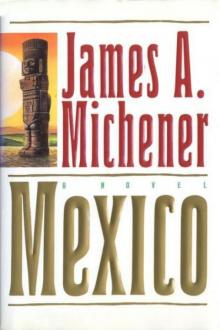 Mexico
Mexico The World Is My Home: A Memoir
The World Is My Home: A Memoir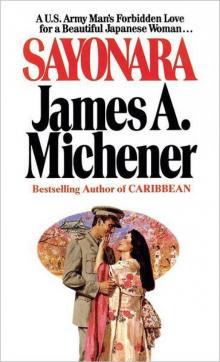 Sayonara
Sayonara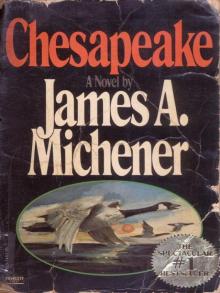 Chesapeake
Chesapeake The Novel
The Novel Rascals in Paradise
Rascals in Paradise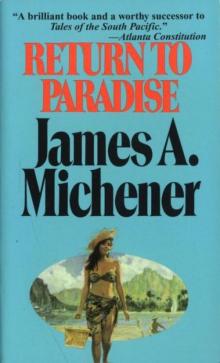 Return to Paradise
Return to Paradise Presidential Lottery: The Reckless Gamble in Our Electoral System
Presidential Lottery: The Reckless Gamble in Our Electoral System The Source
The Source Poland
Poland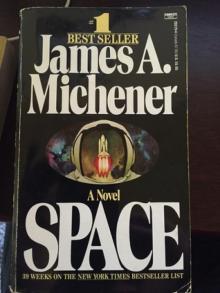 Space
Space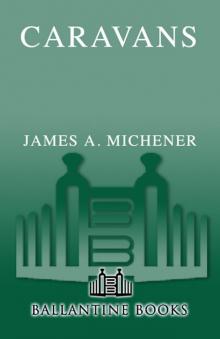 Caravans
Caravans Creatures of the Kingdom: Stories of Animals and Nature
Creatures of the Kingdom: Stories of Animals and Nature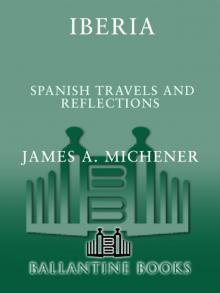 Iberia
Iberia Hawaii
Hawaii The Watermen: Selections From Chesapeake
The Watermen: Selections From Chesapeake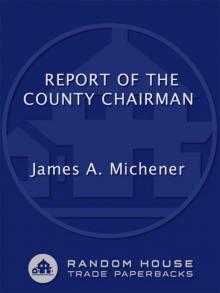 Report of the County Chairman
Report of the County Chairman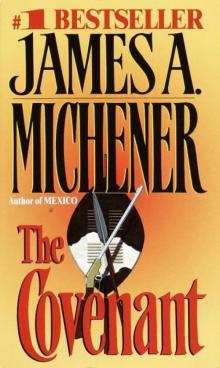 The Covenant
The Covenant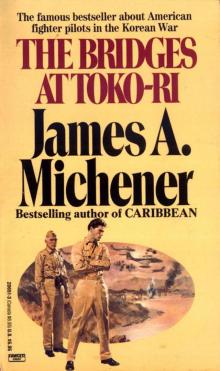 The Bridges at Toko-ri
The Bridges at Toko-ri Matecumbe
Matecumbe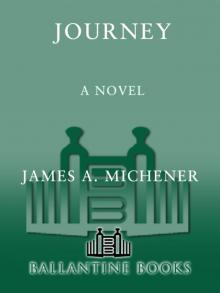 Journey: A Novel
Journey: A Novel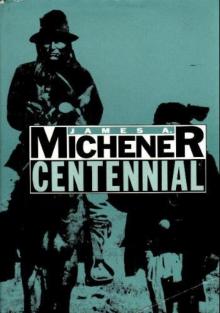 Centennial
Centennial Sports in America
Sports in America Texas
Texas Miracle in Seville
Miracle in Seville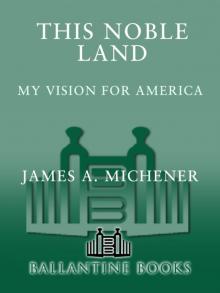 This Noble Land: My Vision for America
This Noble Land: My Vision for America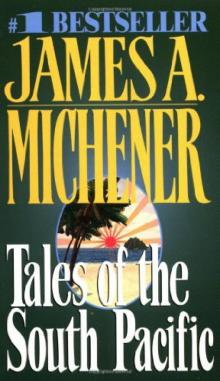 Tales of the South Pacific
Tales of the South Pacific Bridges at Toko-Ri
Bridges at Toko-Ri Space: A Novel
Space: A Novel Presidential Lottery
Presidential Lottery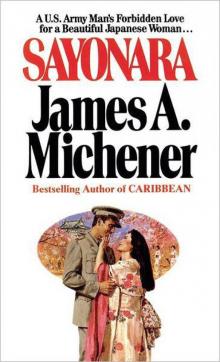 Sayonara: A Novel
Sayonara: A Novel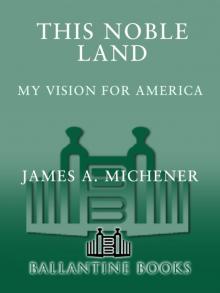 This Noble Land
This Noble Land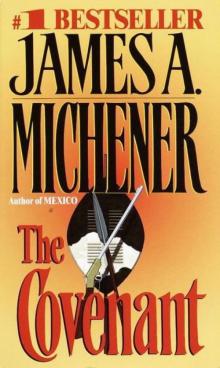 The Covenant: A Novel
The Covenant: A Novel Miracle in Seville: A Novel
Miracle in Seville: A Novel The Bridge at Andau
The Bridge at Andau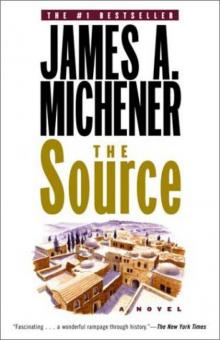 Source
Source The Source: A Novel
The Source: A Novel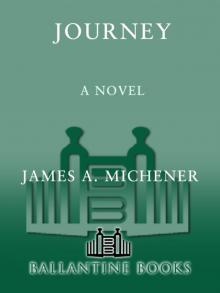 Journey
Journey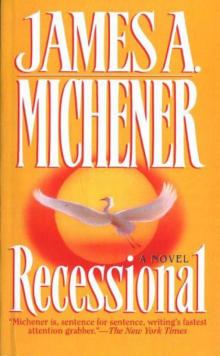 Recessional: A Novel
Recessional: A Novel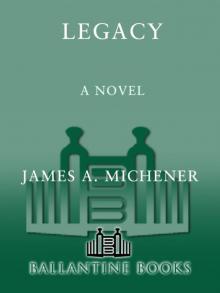 Legacy: A Novel
Legacy: A Novel The Bridges at Toko-Ri: A Novel
The Bridges at Toko-Ri: A Novel Poland: A Novel
Poland: A Novel